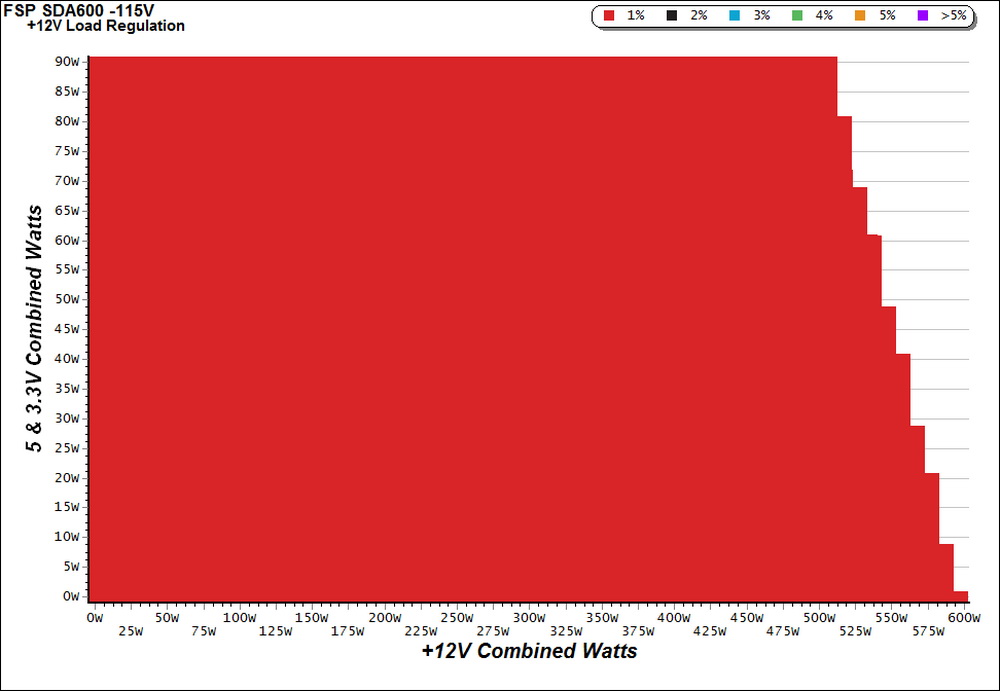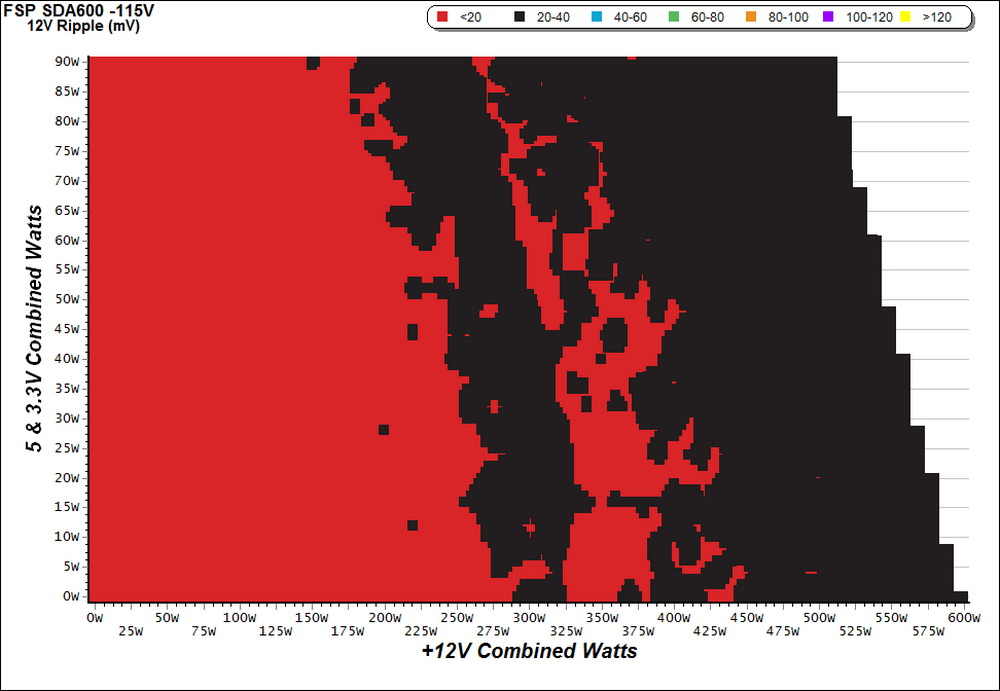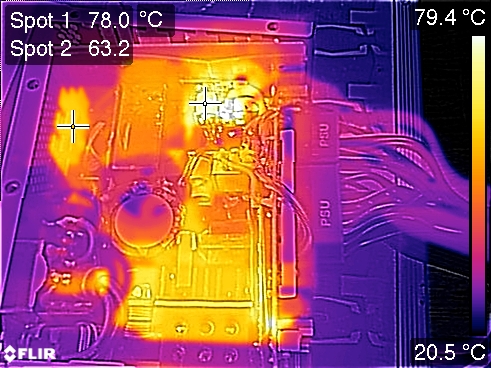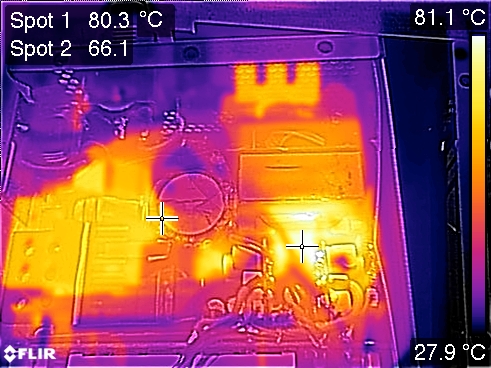FSP Dagger 600W SFX PSU Review
Why you can trust Tom's Hardware
Cross-Load Tests & Infrared Images
Our cross-load tests are described in detail here.
To generate the following charts, we set our loaders to auto mode through our custom-made software before trying more than 25,000 possible load combinations with the +12V, 5V and 3.3V rails. The load regulation deviations in each of the charts below were calculated by taking the nominal values of the rails (12V, 5V and 3.3V) as point zero. The ambient temperature was between at 30°C (86°F) to 32°C (89.6°F).
Load Regulation Charts



Efficiency Chart
The 90-92% efficiency region is quite small, as you can see in the chart above. It would be nice to see >92% efficiency readings with 115V, but a small form factor makes this difficult for FSP's platform to reach.
Ripple Charts




Ripple at 3.3V is really high. FSP should look into that as soon as possible. With any combination that results in more than 400W combined load, the 3.3V rail's ripple simply goes out of control. We tested two samples and both of them behaved similarly, unfortunately.
Infrared Images
We heated up the PSU for 10 minutes with 300W load (half of its capacity) at 26°C ambient and with the fan disconnected. Then we took the following IR shots with our modified FLIR E4 camera that delivers 320x240 IR resolution (76,800 pixels).







The internal temperatures are normal, despite a long period of passive operation with 300W of load. FSP could easily add a semi-passive mode, we think. However, it is better to have the fan spinning slowly under light loads. After all, the company uses a double ball-bearing fan that should last a long time.
MORE: Best Power Supplies
Get Tom's Hardware's best news and in-depth reviews, straight to your inbox.
MORE: How We Test Power Supplies
MORE: All Power Supply Content
Current page: Cross-Load Tests & Infrared Images
Prev Page Protection Features Next Page Transient Response Tests
Aris Mpitziopoulos is a contributing editor at Tom's Hardware, covering PSUs.
-
DarkSable I won't. FSP is a known OEM; arguably the second greatest on the market. The original Silverstone power supplies were made by FSP, while the new ones and Corsair's offerings are made by Great Well, which although doing a good job on Corsair's SFX psus, is not known for their reliability.Reply
